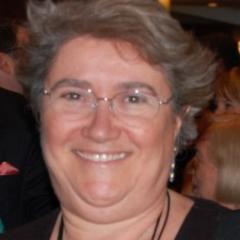
Volunteer of the Month: Cantor Miriam Eskenasy
Cantor Miriam Eskenasy is a 2002 HUC-DFSSM graduate. Her last pulpit was at KAMII in Chicago. Now semi-retired, she is the part-time spiritual leader for a small congregation in Gary, Indiana.
In what capacity have you volunteered for the ACC? Did someone ask you, or did you volunteer on your own?
In the past I managed the Ad Journal. In the last couple of years I have been serving on the ACC board. I was asked to be on the board years ago, but couldn’t join at that time. This time I submitted the paperwork, and was elected. Since then I was appointed as the editor of Koleinu. I will also help out with the biennial this year.
In your experience, what’s the best part of being a Cantor?
People work. The connections you make with adults and children: the ability to inspire children, being able to help people get through difficult moments, and inspire them.
What do you see as the biggest challenge in the cantorate now and in the future?
I think the biggest challenge is how we keep people interested in worship. There is a general move away from worship. Often times the emphasis is on yoga, Israeli folk dancing, retreats etc. The social part is important because it creates community; but worship shouldn’t be forgotten in that process. How do we continue to make worship relevant to people’s lives? How do we make services meet the spiritual needs of our congregants? People used to come to synagogue out of a sense of obligation. The baby-boomer generation has changed the emphasis. Many are seekers of meaning and spirituality. Younger generations still, say: what is in this for me? So I have to ask today, what is it that would bring my children to the synagogue? One of my daughters plays violin and was with me in Israel during my studies. One of my colleagues, who has a congregation in Philadelphia, found out and invited her to play at her synagogue, which she does almost weekly. For her, this is her spiritual connection. My other daughter is not interested in religion at all, only in the cultural aspect of Judaism (Passover seders are quite enough for her). Also, for some cantors it’s hard to adapt to new trends in worship and to discern congregants’ different worship needs. It means that we need to re-educate ourselves to the needs of people today.
What influenced you to become a cantor?
In my younger days, I sang opera, and later joined a Jewish choir in New York. I was a soloist for Janowski’s “Sim Shalom” and “Avinu Malkeinu” for years. We performed with cantors at various synagogues. Cantors sang with us at concerts. So over ten years there was a lot of exposure to cantorial music. Finally the timing was right and I decided to do something for myself and applied to HUC.
Please share something with us that we may not know about you.
I did a project at KAMII where I was commissioned to catalogue all of Max Janowski’s works. I created a database. In total there were 1,036 entries, though some were duplicated (handwritten as well as published later). There were some recordings as well, including solos and instrumentals. There were handwritten scores, both published and unpublished. There were arrangements of other composers’ music. I compiled all the information relevant for cantors and hope to make it available to all of us soon. I was born in Romania and lived in Israel as a teen. Both of my daughters are professional musicians, which makes me very proud.

